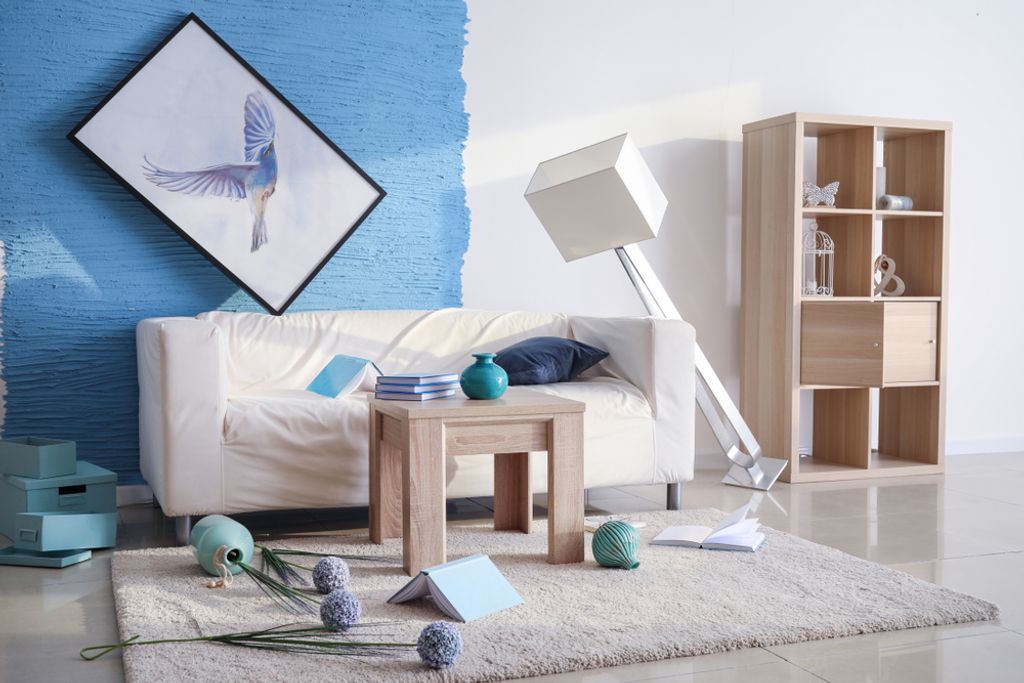
When purchasing insurance for an apartment, many people tend to focus primarily on the structural components. There are many reasons for this bias. First and foremost, there is the immediate context and potential risks that come to mind – such as earthquakes or fires. The fact that many of us will purchase coverage as part of our mortgage insurance is also a factor, as this solution only covers the structure.
However, the real possessions – everything that is truly precious to us – are actually inside. Whether it is a smart TV, laptops, jewelry, musical instruments or collections with sentimental value, all of these are an integral part of the overall value of the home. For this very reason, it is important to make sure that we purchase home insurance that also covers the contents of the home. Here, we will explain why it is so important to include this coverage.
It is important to understand that most of the risks to the structure of our apartment – from fires and electrical short circuits to water damage – will also likely damage everything inside the apartment. In practice, this means that even one small incident can result in damage of tens of thousands of shekels. In reality, we may receive minimal coverage for a simple repair of water damage to the ceiling, but incur huge costs for replacing the damaged carpets, furniture and electrical appliances. And of course, there is the fact thatHome insurance Covering only a structure will not cover cases of theft.
A common mistake among insureds is to underestimate or overestimate the contents of the apartment. In both cases, we will end up losing out. In the first case, the compensation will be partial and will not be enough to replace all the items. In the second case, we will pay an excessively high premium over the years, which does not truly reflect the amount of coverage we will be able to enjoy on the day of the accident. In order to correctly estimate the value of the contents, it is important to conduct a systematic review of each valuable item. Such an assessment must include every valuable item we can think of.
If you intend to purchase Contents insurance, it is important to take the following categories into account in the overall calculation:
● Electrical appliances – including refrigerator, oven, washing machine, dishwasher, televisions, computers and tablets.
● Furniture – including sofas, tables, chairs, beds, dressers and bookcases.
● Valuables – including jewelry, cash, watches, works of art and musical instruments.
● Personal equipment – including clothing, shoes, bags, accessories, glasses and luxury cosmetics.
● Books and collections – especially if there is a valuable collection or rare items.
New items are constantly entering the home – new furniture, advanced electrical appliances, luxury items purchased or received as gifts. To keep your policy relevant, it is recommended to update your home insurance, especially the contents component, at least once a year, or after a major renovation, relocation, or major purchase. In most cases, policies will refer to the total amount of the valuation – but the insurance needs to represent the actual situation. Therefore, if the value of your property has increased – your insurance coverage must increase accordingly.
In the event of damage or theft, the insurance company will require proof. Therefore, it is recommended to document the contents of the house in advance: take photos of rooms, open drawers, attach receipts for expensive purchases, and keep valuations for jewelry or rare items. Some companies even allow you to attach an organized file of items when purchasing the policy, which makes it much easier to file a claim if required.
It is worth knowing that not every item will be covered by regular contents insurance. Sometimes there is a compensation ceiling for a single item (for example, up to 2,000 NIS), or exclusions for cash, important documents, or jewelry that was not kept in a safe. In addition, in cases of flooding, coverage may be limited to only a few rooms, or may not include an outdoor storage room or attic. Therefore, it is important to read the policy and understand the limits – and not assume that every item you own is automatically insured.
This is actually another important aspect of purchasing home insurance that includes contents coverage. When we rent an apartment, we actually have no insurance coverage at all. Even if you don't own the property, everything inside the apartment belongs to you. Purchasing insurance for the contents of the apartment is relevant to everyone and can provide valuable peace of mind. In addition, some policies include third-party liability. That is, coverage in the event that damage is caused to a neighbor as a result of your negligence or an infrastructure failure in the apartment. In this aspect too, home insurance can be valuable for renters.
As you can see here, home insurance doesn’t just protect the four walls – it also protects everything between them. To feel truly safe, it’s important to choose a policy that also includes contents insurance, and make sure it reflects the reality of the home. The first step is simple: look around, understand how much value there is in the apartment, and make sure there is real coverage for it. Only in this way can we know that even in the most unlikely event, we won’t be faced with a broken trough.